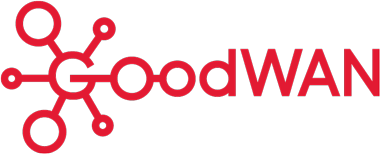Learn more about GoodWAN innovations and technologies
Fill out the form, we will contact you for a consultation
Wearable devices to improve work efficiency and reduce health risks for employees
Smart Helmet / Smart Equipment / Monitoring Tag
The most difficult thing in developing any device is the correct positioning of the device and the balance between the requirements of future customers for functionality and their actual implementation. It is very important not to chase after fulfilling all the "wants" of customers, otherwise you may end up with a device that cannot be used in real life.
The task of creating wearable devices is quite complex, because customers try to make contradictory demands on such devices. Here is a far from complete set of such wishes:
Everyone wants to be able to very accurately (up to 10 cm) determine the location of an employee - both outdoors and inside buildings, to be able to determine his motor activity - is the employee sleeping at his workplace? Measure the employee's pulse, detect falls from a height and strong blows to protective equipment. Be able to send an SOS signal. Get two-way voice communication. Prompt the employee that large equipment is moving nearby - posing a potential danger, turning on the buzzer and lighting up the LEDs in the employee's field of vision from the direction of movement. Record all employee actions on camera, and display augmented reality on protective glass - the screen in front of the eyes. It is also good for the device to have all conceivable and inconceivable certificates, including explosion protection. Imagine a soldier of the future in an exoskeleton? But that's not all - the device must be small, weigh little and work for at least 5 years; and of course, the main requirement is to cost as little as possible.
This is a real set of requirements put forward by customers. Of course, almost all of them can be implemented, but then the device will not be small and cheap, it will be bulky, weigh several kilograms, work for a day and will come with two suitcases with batteries ...
The task of creating wearable devices is quite complex, because customers try to make contradictory demands on such devices. Here is a far from complete set of such wishes:
Everyone wants to be able to very accurately (up to 10 cm) determine the location of an employee - both outdoors and inside buildings, to be able to determine his motor activity - is the employee sleeping at his workplace? Measure the employee's pulse, detect falls from a height and strong blows to protective equipment. Be able to send an SOS signal. Get two-way voice communication. Prompt the employee that large equipment is moving nearby - posing a potential danger, turning on the buzzer and lighting up the LEDs in the employee's field of vision from the direction of movement. Record all employee actions on camera, and display augmented reality on protective glass - the screen in front of the eyes. It is also good for the device to have all conceivable and inconceivable certificates, including explosion protection. Imagine a soldier of the future in an exoskeleton? But that's not all - the device must be small, weigh little and work for at least 5 years; and of course, the main requirement is to cost as little as possible.
This is a real set of requirements put forward by customers. Of course, almost all of them can be implemented, but then the device will not be small and cheap, it will be bulky, weigh several kilograms, work for a day and will come with two suitcases with batteries ...
we rethought the task of personnel control
and implemented only one main function -
control of the zone in which the employee is located
and implemented only one main function -
control of the zone in which the employee is located
Namely zones, and not exact positions, because if you look into it, this is the main basic requirement, necessary and sufficient for the vast majority of customers. We also simplified the deployment of this system as much as possible, making all its infrastructure components completely autonomous. We made several options for implementing this system, adapting them to different customer requirements. In addition, we equipped our tags with a built-in RFID tag of the widespread Em-Marine format, which allows them to be used in the ACS system. How does it work? Let's figure it out.

BLE tag for personnel monitoring
The tag weighs 20 grams and is powered by a CR2032 battery. Dimensions 36 x 60 x 10 mm.
The battery life is at least one year.
An explosion-proof version of the tag is available upon request.
The tag has an Em-Marine RFID tag built into it, which allows the tag to be used in the ACS system instead of regular access cards.
Each tag has its own unique identifier
The tag is “tied” to the nearest anchor by signal strength for a certain period of time, so as not to overload the system with unnecessary events. At the output, in our software, you can build a report on specified dates - broken down by tags, by zones - on employee registration in zones. You can also select all events for a specific tag in a specific zone.
There are various form factors of BLE tags. In particular, in addition to the standard key fob tag, there is an option with an extended service life of up to 4 years and greater durability, as well as a tag that will not only provide standard functionality.
The battery life is at least one year.
An explosion-proof version of the tag is available upon request.
The tag has an Em-Marine RFID tag built into it, which allows the tag to be used in the ACS system instead of regular access cards.
Each tag has its own unique identifier
The tag is “tied” to the nearest anchor by signal strength for a certain period of time, so as not to overload the system with unnecessary events. At the output, in our software, you can build a report on specified dates - broken down by tags, by zones - on employee registration in zones. You can also select all events for a specific tag in a specific zone.
There are various form factors of BLE tags. In particular, in addition to the standard key fob tag, there is an option with an extended service life of up to 4 years and greater durability, as well as a tag that will not only provide standard functionality.

anchor for zone marking
Our communication system, which provides data collection from wearable devices, is two-tiered. The tags themselves operate on the BLE protocol and constantly send their unique identifier over the air. The territory of the enterprise is marked with special devices - anchors, which receive a signal from the tags via the BLE protocol and transmit it further via our LPWAN radio channel. Usually, the anchor hears tags within a radius of about 50 meters around itself, so if the enterprise is large, you will have to install quite a lot of anchors. But their number can be optimized if you think about the necessary control zones. Of course, the range of the anchor in the settings can be “roughened” so that the anchor works not at 50 meters, but, for example, only at 10. The upper-level LPWAN radio channel is long-range, it can be received tens of kilometers away. In addition, it has good penetrating ability - walls weaken it, but we still have a large range at the output. Therefore, to receive signals from anchors, it is enough to install only 1 signal receiver - a network gateway. Sometimes, to increase reliability, enterprises install 2 network gateways. You can declare certain zones as “forbidden”, then when tags enter this zone, an alarm signal will be immediately induced.
Employee location control tags provide the following benefits:
Improved occupational safety. In the event of a fire or evacuation, the system will allow you to track which employees have not left the premises and promptly organize assistance. Identification of tags occurs at a distance, without contact or direct visibility of the object.
Analysis of the employee's "working day map". The system allows you to analyze the employee's activities. As a result, labor discipline is significantly improved.
When issuing tags to employees of contractors, the system can be used to monitor SLA compliance, among popular examples:
Improved occupational safety. In the event of a fire or evacuation, the system will allow you to track which employees have not left the premises and promptly organize assistance. Identification of tags occurs at a distance, without contact or direct visibility of the object.
Analysis of the employee's "working day map". The system allows you to analyze the employee's activities. As a result, labor discipline is significantly improved.
When issuing tags to employees of contractors, the system can be used to monitor SLA compliance, among popular examples:
- Monitoring plumbers, electricians, cleaners, security personnel;
- Monitoring the maintenance of complex equipment - UPS, diesel generators
- Determination of "bottlenecks" when moving employees during technological processes. The system can be used to track in which areas employees spend too much time.
- Automatic notification of zone violations. The system can set prohibited or especially dangerous zones for personnel movement and, in the event of a zone violation, automatically notify the operator.
- Reduction in the cost of installing additional devices. Using battery-powered equipment, wireless anchors and tags reduces the cost of determining location inside the building. It also ensures that the system remains operational even when the power goes out.

We are ready to assist you in implementing the system by developing draft internal regulatory documentation (local legal acts) on issues of electronic access control and working time control
Anchors can have a special design. They can be installed at the entrance/exit to the territory of the enterprise and control the removal of equipment equipped with our tags.
The tags are used to implement the system for determining the location of workers in accordance with paragraph 30 c) and paragraph 49 of the Order of Rostekhnadzor dated October 28, 2020 N 428 On approval of the Federal norms and rules in the field of industrial safety Safety rules for the processing, enrichment and briquetting of coal (Registered in the Ministry of Justice of Russia on December 21, 2020 N 61627).
This system can also be used with other work tactics, in very difficult radio conditions - for example, basements, mines, shipyards, ships, etc. The tactics of the system change - the wearable tag records signals from all anchors that were visible to it during the working day. At the end of the working day, when the employee leaves through the checkpoint, the tag resets the event log for the working day.
The tags are used to implement the system for determining the location of workers in accordance with paragraph 30 c) and paragraph 49 of the Order of Rostekhnadzor dated October 28, 2020 N 428 On approval of the Federal norms and rules in the field of industrial safety Safety rules for the processing, enrichment and briquetting of coal (Registered in the Ministry of Justice of Russia on December 21, 2020 N 61627).
This system can also be used with other work tactics, in very difficult radio conditions - for example, basements, mines, shipyards, ships, etc. The tactics of the system change - the wearable tag records signals from all anchors that were visible to it during the working day. At the end of the working day, when the employee leaves through the checkpoint, the tag resets the event log for the working day.

Convenient software that allows you to build reports for a certain period of time in the section by zones and by tags. Reports can be downloaded in tabular form for further processing
BLE tags are used wherever control of the personnel or equipment location area is required, regardless of satellite positioning systems and the availability of cellular communications

Order a project
By clicking on the button, you agree to the privacy policy and consent to the processing of personal data


